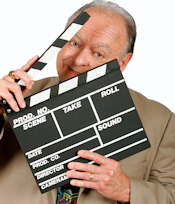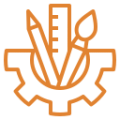The True Story Behind the Reindeer Games
For starters, the song got several things wrong:
- Rudolph is actually a girl. Her name is Ruby. She is called that because she wears a bright red gemstone on her nose. The gemstone doesn’t glow. It shimmers.
- The reindeer are all female. Male reindeer lose their antlers in early December, so they cannot possibly pull Santa’s sleigh.
- It’s true that the reindeer resented Ruby, but her nose was not the reason. The team was becoming argumentative and catty – especially Donner, who they all called “Downer” – and Merri Claus brought Ruby in to be the team leader.
- The reindeer hated that. Behind her back, they called Ruby a “Merri bright noser.”
To try to bring some camaraderie to the team, Ruby came up with the idea for the Reindeer Games. Her team refused to play, and when they did join in, they did so reluctantly.
How the Games Became Tradition
After some time, something interesting happened. The elves at the North Pole joined in on the fun. Over time, the Reindeer Games became so popular that even the reindeer finally joined in.
Some of the most popular team building games are:
- Sleigh speed runs
- Short roof landings
- Reindeer long and high jumps
- Cookie tosses
- Outrageous snowman building
- Giant gingerbread house decorating
- Toy assembly races
- Ice carving Christmas trees
- Toy speed wrapping races
The two most favorite activities are the Santa Cocoa Dunk – throwing snowballs at a lever that dunks a leader from Santa’s Workshop into a vat of not-too-hot hot chocolate – and the Santa Sack Hop, where a representative from each North Pole team races while hopping inside a Santa Sack. The fun comes when toys materialize inside each sack and interfere with the racer. Legos materializing underfoot are the most dreaded toy.
Bringing the Spirit of Team Building Games to Your Organization
Although the Games are fantastic fun, they are really focused on team building, practical workplace skills, and supporting and enhancing the application of the Workshop’s decision-making filter: SMILE. Whenever a Workshop team member has to make a decision, they are trained to ask themselves,
Is what I am about to do:
- Safe,
- Magical,
- Inclusive,
- Loving,
- and Efficient?
Scoring for the Games is, wherever possible, based on points received in each of these categories. And the team with the highest score at the conclusion of the Games gets a special dinner celebration catered by the local Bowl of Jelly restaurant.
I realize that the North Pole is a fanciful place and that corporate team building games might seem irrelevant, but consider what various businesses could do with a set of games.
A grocery chain could, for example, have stocking, bagging, and grocery cart races. A challenge to find the out-of-place items on a shelf could be fun. Specialty areas like the bakery, deli, and butcher shop could have their own creative applications. And finally, check-out lanes could run speed-checkout contests. It might not even be necessary to close a store.
When I worked at EPCOT Center, Future World Attractions, the leadership hosted a “Future World 500” game during the busiest time of the year, Easter week. Each attraction, including my Spaceship Earth team, was scored on its success at delivering safety, service, and efficiency, all while maintaining the quality show EPOCT was famous for. Although the team at Spaceship Earth won the contest, the real winners were the guests who experienced a safe and fun ride experience.
Additionally, both the North Pole and the Disney Parks host seasonal events like team pumpkin carving and Christmas/Holiday tree decorating contests. The season picked and the activities themselves are not the point. The key is to align these types of contests to actual organizational skills and needs, and to boost department pride, employee morale, and effective team building.
You may not, like Ruby, have a song written about your organization, but after an effective set of these games, your people will be singing your company’s tune.



























